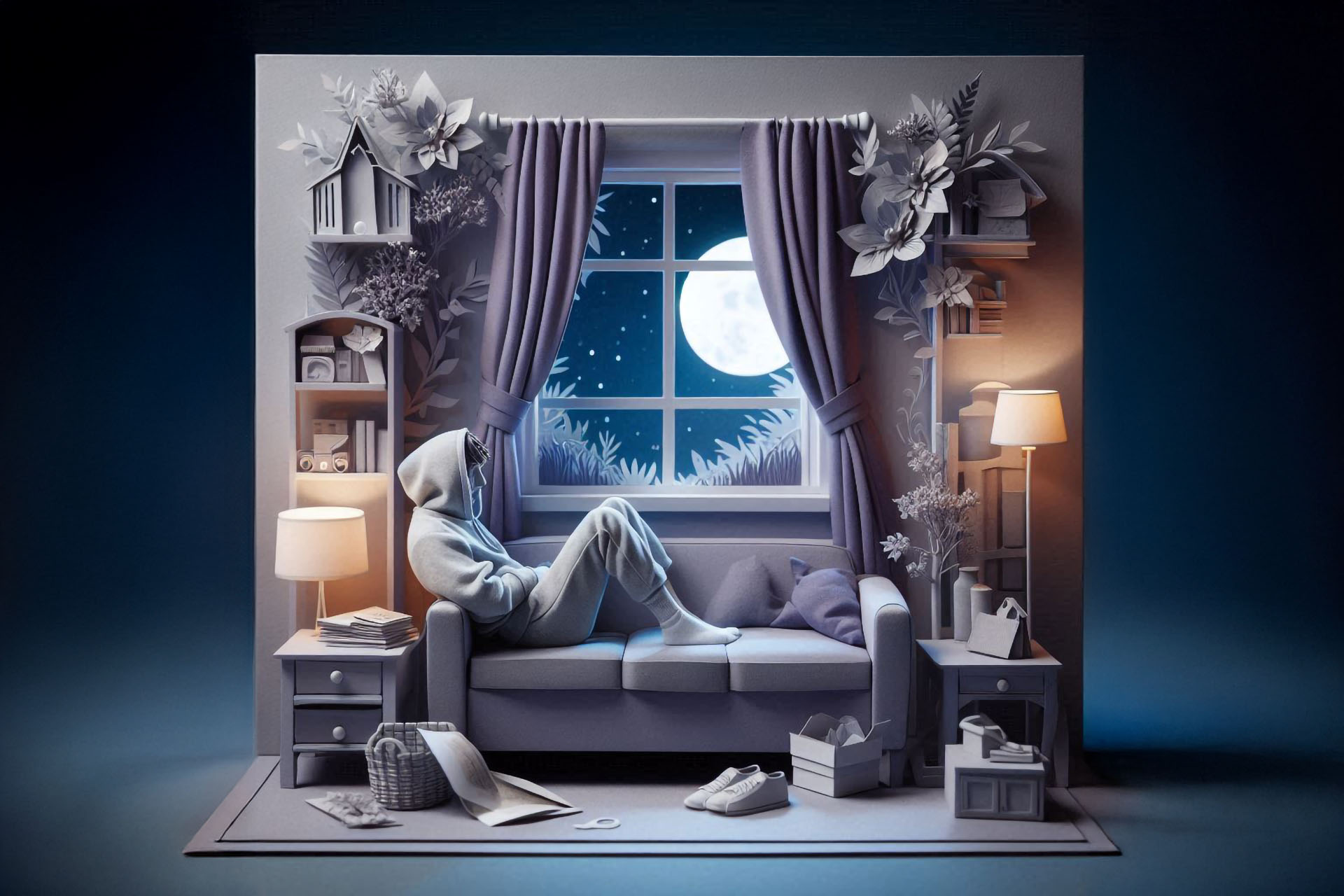Every fall, many people feel a subtle shift. The mornings are darker, the evenings shorter, and somehow, motivation wanes. Exercise feels harder, you may start craving comfort foods, the shorter days may affect your mood, and even everyday tasks and chores can feel challenging.
Key Takeaways
- Less daylight can disrupt your circadian rhythm, hormones, and habits, which impacts your mood and energy.
- Less sunlight means less Vitamin D and serotonin, which are vital for your emotional well-being.
- You can counteract the fall funk with light therapy, outdoor time, a healthy amount of sleep, and social connection.
These feelings are not your imagination, nor are they happening just because of the changes in the weather. The darker days can alter how your brain and body function. However, the good news is that once you understand why it happens, you can beat the fall funk and stay energized all season long.
You Depend On Daylight
Your body has an internal clock known as a circadian rhythm, which follows a roughly 24-hour cycle. At its core is the brain’s master clock, known as the suprachiasmatic nucleus (SCN). This tiny area in the hypothalamus region of your brain relies on sunlight to keep your biological functions on track. Additionally, there are two key brain chemicals that directly affect your mood and energy.
Melatonin is a hormone that communicates that night is coming. It helps synchronize your circadian rhythm by triggering drowsiness, reducing your body temperature, and preparing your body for sleep. Longer nights mean higher melatonin levels, which make you feel sleepy or sluggish during the day.
Serotonin, the feel-good neurotransmitter, affects your sleep, mood, and body functions. When you have enough serotonin, you’re likely to feel positive and handle stress better. You can boost serotonin by doing things like exercising, getting outside during the day, eating healthy foods, and getting enough sleep. If your serotonin is low, you might feel sad, tired, or moody.
As daylight hours shrink, your body receives fewer light cues. This can delay your wake-up signals, alter hormone timing, and disrupt your sleep cycles. As a result, you may feel less energetic, procrastinate more, and experience a shift in your mood. When melatonin dominates and serotonin drops, you feel more tired, moody, and less focused.

Vitamin D And Sunlight
Sunlight doesn’t just regulate your sleep. It also helps your body produce Vitamin D, which is a vital nutrient that supports bones, immune health, and brain chemistry. While you can get Vitamin D through foods, such as fatty fish, egg yolks, fortified dairy, and cod liver oil, the sun causes your body to generate Vitamin D3, which is more potent and directly absorbed into the body when skin is exposed to the sun.
Low Vitamin D levels can lead to higher rates of depression, fatigue, and brain fog. This is especially true during the winter. Vitamin D also plays a role in mood-boosting neurotransmitters, controlling inflammation (which can affect your mental health overall), and supporting your nervous system.
If you live in colder regions or spend most of your day indoors, a blood test can determine if your Vitamin D levels are low. If that’s the case, consult with your doctor about supplementing Vitamin D. Maintaining normal levels of Vitamin D can help stabilize both physical and emotional energy.
Seasonal Affective Disorder (SAD)
While most cases of a fall funk or normal, for some, the seasonal slump becomes a deeper depressive state known as Seasonal Affective Disorder (SAD).
Seasonal Affective Disorder is a type of depression directly linked to changes in seasons. It’s most common in the late fall and winter when daylight hours decrease. Seasonal Affective Disorder is more than just feeling down. It’s a clinically recognized condition where reduced sunlight disrupts your body’s internal biological rhythms. The lack of sunlight causes a drop in serotonin and increases melatonin production, which makes you feel sluggish and tired. The farther you live from the equator, where seasonal light variations are more extreme, the more likely you are to experience Seasonal Affective Disorder.
Some of the common symptoms include persistent low mood, loss of energy, sleeping more than usual, weight gain, difficulty concentrating, and feelings of hopelessness. Some people might experience social withdrawal, reduced physical activity, and increased food cravings.
Thankfully, it’s very treatable. Treatment options include light therapy with specialized bright light boxes, medication, vitamin D supplements, and lifestyle changes such as regular exercise, maintaining a consistent sleep schedule, and spending time outdoors during daylight hours. The goal is to reset your body’s internal clock and restore hormonal balance.
Practical Ways To Stay Balanced
You can’t change the tilt of the Earth, but you can change how your body and mind adapt to it. Your body and mind are adaptive systems. Just as they adjust to darkness, body and mind can be retrained to thrive within it. Light therapy, routine, movement, and meaningful connection all send powerful messages to your brain that the day is here, so stay awake and engaged.
Within a few weeks, most people feel more energetic, better focused, and a renewed sense of optimism. You may not control the sun, but you can control how you shine under it. So, let’s look at some proven strategies to help you stay optimistic and energetic through the dark months.
Light Therapy
Light therapy is a treatment that mimics natural outdoor light to help regulate your body’s circadian rhythm and boost your mood. It’s particularly helpful for those struggling with Seasonal Affective Disorder.
Using a specialized light box that emits bright, full-spectrum light, this therapy aims to replace the missing sunlight during darker months. Light boxes produce significantly more intense illumination than typical indoor lighting, which is comparable to bright morning sunlight.
Typically, treatment begins in early fall, using the light consistently at the same time each day. While using the light, continue doing everyday activities like reading or having breakfast. However, avoid late-day sessions to prevent any sleep disruption.
By exposing yourself to this artificial light, you can help reset your internal biological clock, increase serotonin production, and reduce melatonin, ultimately improving mood and energy levels. However, consult with your doctor before starting light therapy, especially if you have eye conditions, take photosensitive medications, or have a history of bipolar disorder.
Get Outside, Even On Cloudy Days
Getting outside is a great way to maintain mental and physical well-being. Even overcast skies provide significantly more natural light than indoor lighting. A brief outdoor walk can expose you to outdoor light, enhancing your alertness and mood.
To maximize light exposure, rearrange your workspace near a window, keep blinds open, and seek out brief outdoor breaks. Even 10-15 minutes of daylight can make a significant difference in your mood and cognitive function.

Exercise Regularly
Exercise can significantly help manage your mood, especially during darker months. Physical activity boosts endorphins, dopamine, and serotonin. By incorporating exercise into your day, you’re essentially adding a natural mood-enhancing session along with its other benefits.
Aim for at least 30 minutes of movement most days, choosing activities you enjoy. Brisk walking, cycling, yoga, indoor dancing, running, or even enthusiastic house cleaning all count as exercise. When possible, take these activities outdoors to combine light exposure with physical movement, creating a solid plan for maintaining mental and emotional well-being. The key is finding movement that feels good and enables you to stay consistent.
Stick To A Routine
Maintaining a consistent daily routine is essential for managing your body’s internal clock, especially during seasons with less daylight. When darkness disrupts your natural rhythms, your routine acts as an anchor. By waking up and going to bed at the same time every day, you’re signaling your body when to produce melatonin and when to be alert, which is essential for maintaining a positive mood and mental health.
To support a healthy circadian rhythm, adopt habits that promote predictability. Limit your caffeine intake in the afternoon to prevent sleep disruptions. Also, avoid screen time an hour before bed to reduce interference with melatonin production. These small but consistent actions help your body maintain a balance, thereby reducing the impact of mood fluctuations and providing structure and predictability in times with less daylight during the day.
Stay Connected
Humans are social creatures. Even when the weather drives you indoors, connection acts as emotional light. Schedule dinners, join a club, or reach out online to others because those small interactions counteract isolation and help maintain perspective.
However, if your sadness feels overwhelming, lasts for weeks, or interferes with your daily life, it may be time to reach out to a professional for treatment. Therapy and medications are proven treatments for seasonal mood disorders. Remember, there’s no shame in seeking help.
Conclusion
When daylight fades, your energy may as well. However, it’s normal that your mood and energy change with the seasons. As a result, the darker months can cause you to slow down. But slowing down doesn’t have to mean stopping.
By combining light exposure, good sleep, exercise, nutrition, and social connection, you can stay balanced through the darker days of fall and winter. The world outside may be darker longer, but your motivation, creativity, and joy don’t have to be affected by it. With mindfulness and self-care, you can feel your best through every season.
FitTrend’s mission is to help you along your self-improvement journey, promote an active lifestyle, and help you achieve your goals. Our journal can help you track your workouts, weight, mood, calories, and more. Also, FitTrend allows you to connect supported gadgets to your account to make it easier for you to update your journal automatically. Create your account today and start using FitTrend for free!
Disclaimer: No content on this site should ever be used as a substitute for direct medical advice from your doctor or other qualified clinician.





